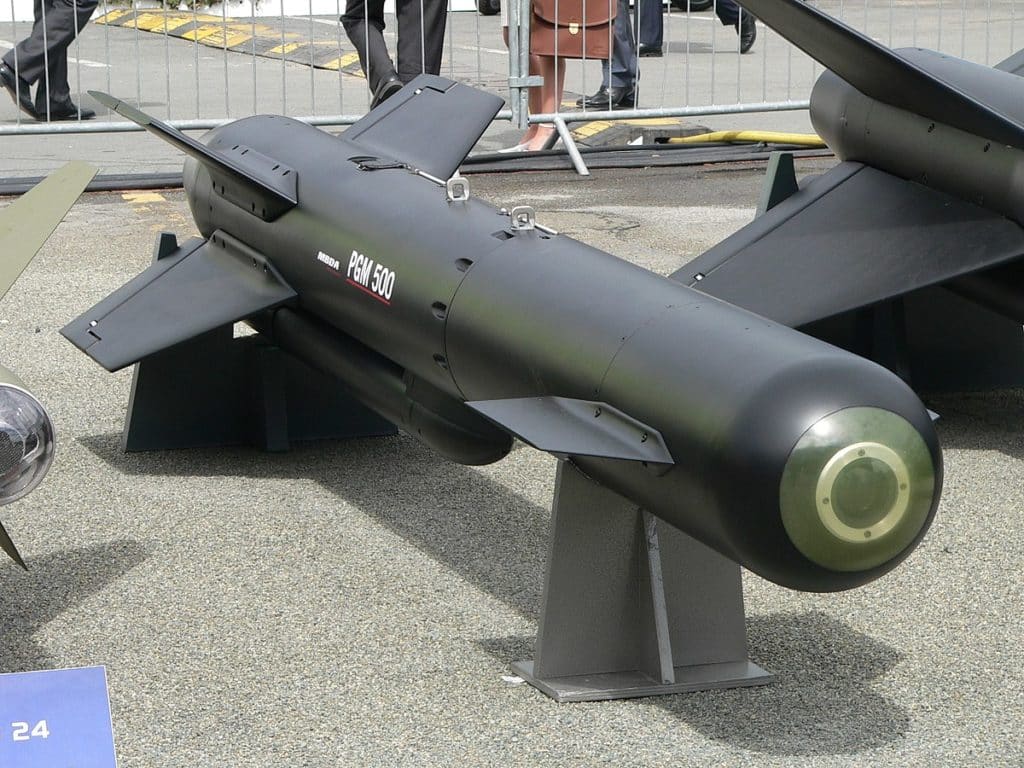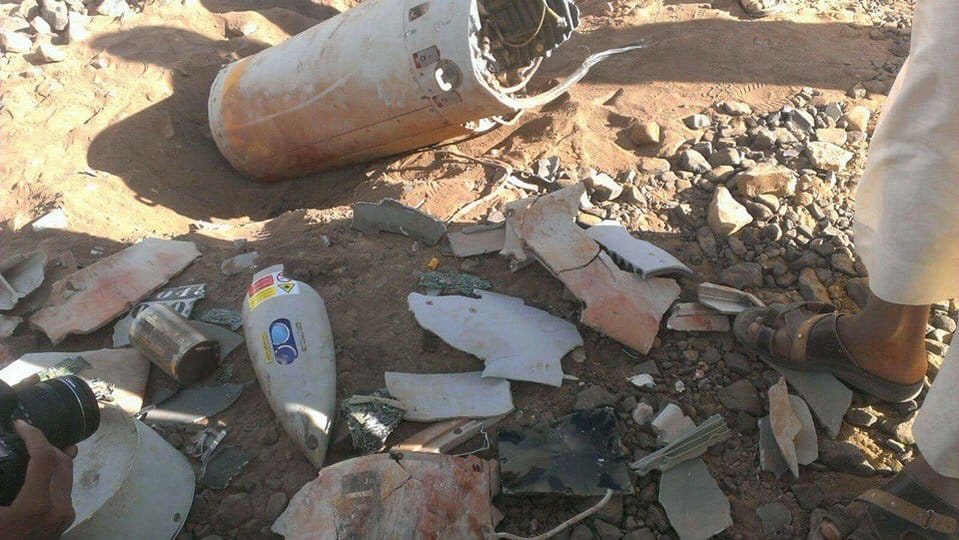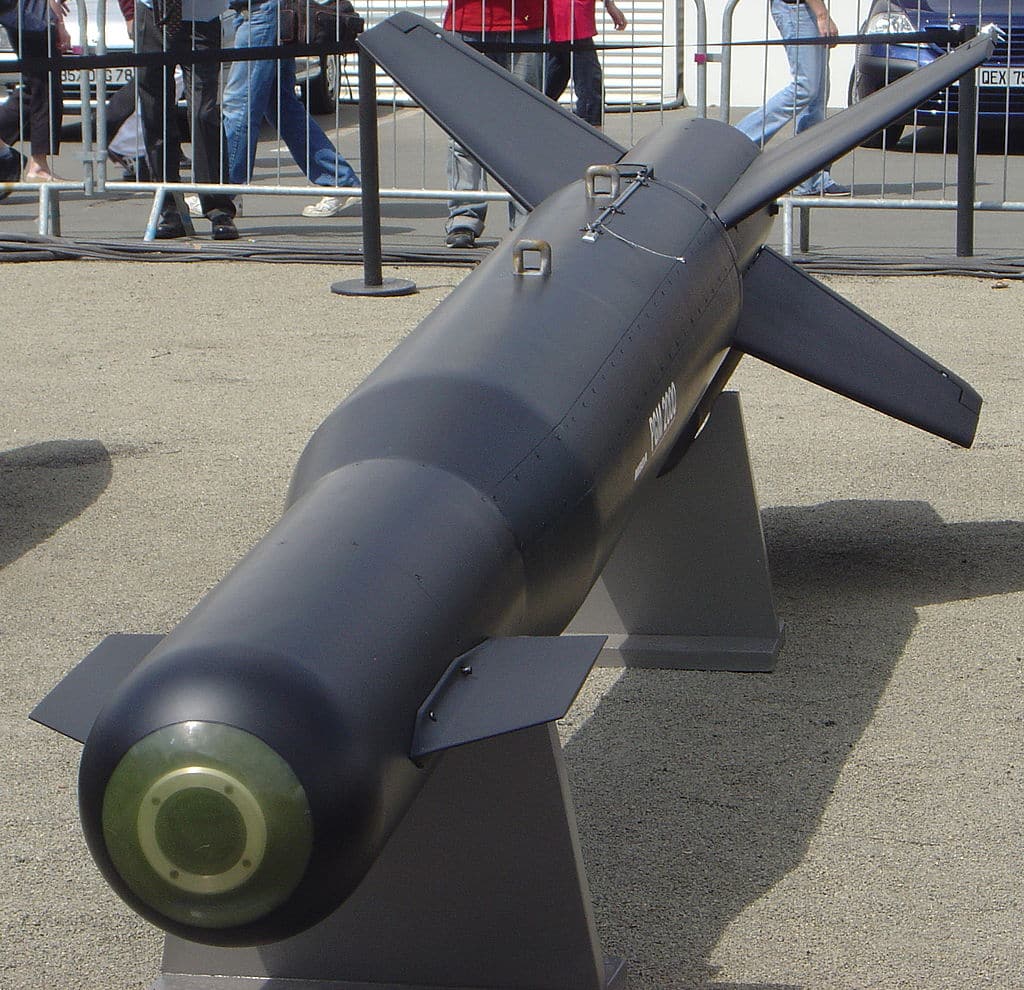The Precision Guided Missile-500 / PGM-2000 is a short-range, air-to-surface missile developed by the United Kingdom and the United States. The missile has been primarily exported to the United Arab Emirates, where it is known as the Hakeem. PGM’s have been employed in Libya and Yemen.
PGM-500 / PGM-2000 at a Glance
- Originated From
- United States/United Kingdom
- Possessed by
- United Kingdom, United Arab Emirates
- Alternate Names
- Hakeem A/B (UAE designation), PGM-1/2/3
- Class
- Air-to-surface (ASM)
- Length
- 3.38 m (500), 4.62 m (2000)
- Diameter
- 0.36 m (500), 0.460 m rear body (2000)
- Range
- 15-50+ km
- Payload
- Single warhead, 227 kg (500) or 910 kg (2000)
- Warhead
- High explosive, blast/fragmentation, submunitions
- Guidance
- Active radar, Semi-Active Laser, Television Imaging, Imaging Infrared
- Propulsion
- MARC 223 solid fuel motor
- Status
- Operational
- In Service
- 1992-Present



PGM-500 Development
The U.S.-based International Signal and Control (ISC) began developing the Precision Guided Missile (PGM) for the United Arab Emirates in 1984. ISC was sold to Ferranti in 1987, which in turn was forced to sell its missile manufacturing business to GEC-Macroni Dynamics, based in the United Kingdom, in 1991.1
The United Kingdom opposed the original design presented by GEC, claiming the missile’s range would be too close to the 300 km limit established by the Missile Technology Control Regime, and forced GEC to change the missile’s design to decrease its range.2
During its development, the project has been referred to as: Project Alpha, GMX/Felix, Little Brother and Pegasus. This is likely because of the many changes in management throughout development. The UAE designation for the missile is the Hakeem (Arabic: “Wise”).
First introduced to the public at the Farnborough Air Show in 1994, the missile was renamed in 1995 to the PGM-500 and PGM-2000, the numbers representing the warhead’s weight in pounds (Hakeem A and B, respectively).3
Reports from 1995 also indicate the program was divided to develop interchangeable seekers for the airframe. In addition to distinguishing between the two weight classes, the missile is divided into three categories based on its seeker.
The PGM-1 is outfitted with a semi-active laser (SAL), the PGM-2 with a TV seeker, and the PGM-3 with an imaging infrared (IIR) seeker.4
A PGM with a 500-pound warhead and an imaging infrared seeker, for example, would be designated PGM-500/3. The PGM-1/-2 went into production in 1990, and the PGM-3 in 1993. A PGM-4 program was terminated by the UK government in 1995.5
Flight Testing & Exports
PGM-1/2 missiles performed flight trials on the French Mirage 2000 combat aircraft and the U.S. F-16. In 1985, the UAE ordered 500 PGM-1s and 500 PGM-2s, first deploying the system on the Mirage 2000 airframe in 1992. After flight tests of the PGM-3’s IIR seeker in October and November of 1995, the UAE ordered approximately 700 PGM-3s, bringing their total inventory to approximately 1,700 units.6
Specifications
The PGM-500/-2000 is a short-range, air-launched, air-to-surface missile. The PGM-500 is a shorter missile, measuring 3.38 m in length, 0.36 m in diameter, and weighing 404 kg at launch.7 The missile is powered by a single 127 mm MARC 223 solid fuel motor, and has a range of 15 to 50+ km, depending on launch altitude.8 The PGM-500 carries high explosive, blast fragmentation, or submunition warheads. All variants can be fitted with various fusing options, including impact or proximity/airburst detonations.9
The PGM-2000 is longer and larger, measuring 4.62 m in length and 0.46 m in rear body diameter, but it is equipped with the same seekers and payloads as the PGM-500. Weighing 1115 kg at launch, the PGM-2000 is propelled by two 127 mm MARC 223 solid fuel motors.10
The missile is fitted to the Mirage 2000, Panavia Tornado, SEPECAT Jaguar, F-16 Fighting Falcon, F/A-18 Hornet, and F-4 Phantom aircraft.11
Variant Seeker PGM-1 Semi-active laser (SAL) PGM-2 Television Imaging (TV) PGM-3 Imaging Infrared (IIR)
Operational History
The UAE has employed the PGM-500 on several occasions. The UAE air force reportedly fired PGMs in Libya during Operation Unified Protector in 2011, which was confirmed in July 2012 after an unexploded PGM-500 was found 1 km from an airstrip south of Zintan, Libya.12
This is thought to be the first operational use of the PGM-500.13
The missile was used again in an airstrike on September 23, 2015, in Matnah, southwest of Sana’a City, Yemen. Three to four munitions, at least one of which was a PGM-500, targeted a ceramics factory suspected of manufacturing weapons.14
Amnesty International claimed it saw no evidence to indicate the factory was being used for military purposes.
Misidentified by media outlets as an unmanned aerial vehicle, a PGM-500 was located by Yemeni people in Sahar, on November 5, 2015, within the governate of Sadaa, located in the northwestern region of Yemen. The missile appeared to have failed in flight, landing in an open field.15
Footnotes
- “United Arab Emirates employ British Hakim A series precision guided munitions in Yemen,” Armament Research Services, November 26, 2015, http://armamentresearch.com/united-arab-emirates-employ-british-hakim-a-series-precision-guided-munitions-in-yemen/.
- “UK clears Hakim for sale to UAE,” Flight Global, March 29, 1995, https://www.flightglobal.com/news/articles/uk-clears-hakim-for-sale-to-uae-27118/.
- “PGM-500/-2000, Hakeem (PGM-1/2/3/4),” in IHS Jane’s Weapons: Strategic 2015-2016, ed. James O’Halloran (United Kingdom: IHS, 2015), 208-209.
- “UK Ministry of Defense Clips Pegasus Wings,” Flight Global, March 6, 1996, https://www.flightglobal.com/news/articles/uk-ministry-of-defence-clips-pegasus-wings-17749/.
- O’Halloran.
- “UK Ministry of Defense Clips Pegasus Wings,” Flight Global, March 6, 1996, https://www.flightglobal.com/news/articles/uk-ministry-of-defence-clips-pegasus-wings-17749/.
- “PGM,” MBDA Solutions, Web Archive, https://web.archive.org/web/20080519234328/http://www.mbda-systems.com/mbda/site/ref/scripts/siteFO_contenu.php?lang=EN&noeu_id=119&page_id=114.
- Armament Research Service.
- “PGM-500,” Deagel, http://www.deagel.com/Offensive-Weapons/PGM-500-TV_a001131002.aspx.
- O’Halloran, 208.
- “PGM-500/-2000, Hakeem (PGM-1/2/3/4),” in IHS Jane’s Weapons: Strategic 2015-2016, eds. James O’Halloran (United Kingdom: IHS, 2015), 209.
- David Cenciotti, “Photo: Unexploded MBDA PGM-500 500-lb guided bomb Hakim blown at Zintan, Libya,” The Aviationist, July 12, 2012, https://theaviationist.com/2012/07/12/unexploded-hakim/.
- M. Cherif Bassiouni, Libya: From Repression to Revolution: A Record of Armed Conflict and International Law Violations 2011-2013, (Boston: Martinus Nijhoff, 2013), 204.
- “Yemen: Coalition used UK missile in unlawful airstrike,” Amnesty International, November 25, 2015, https://www.amnesty.org/en/latest/news/2015/11/yemen-coalition-used-uk-cruise-missile-in-unlawful-airstrike/.
- Armament Research Services.